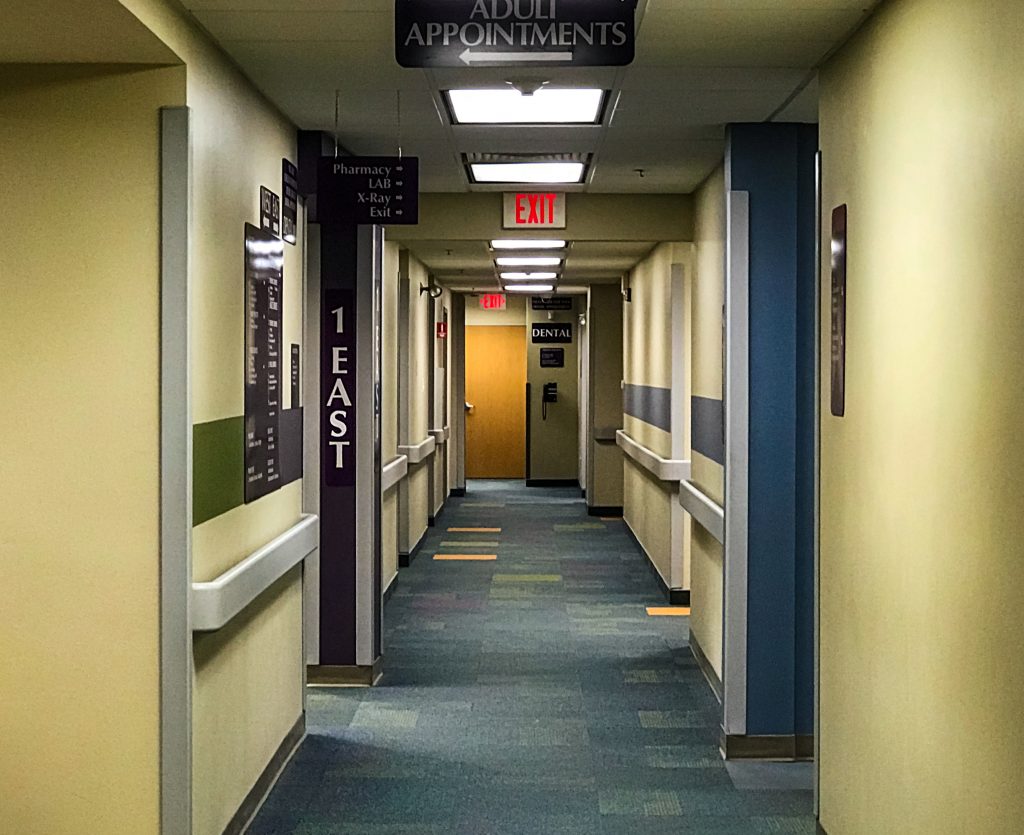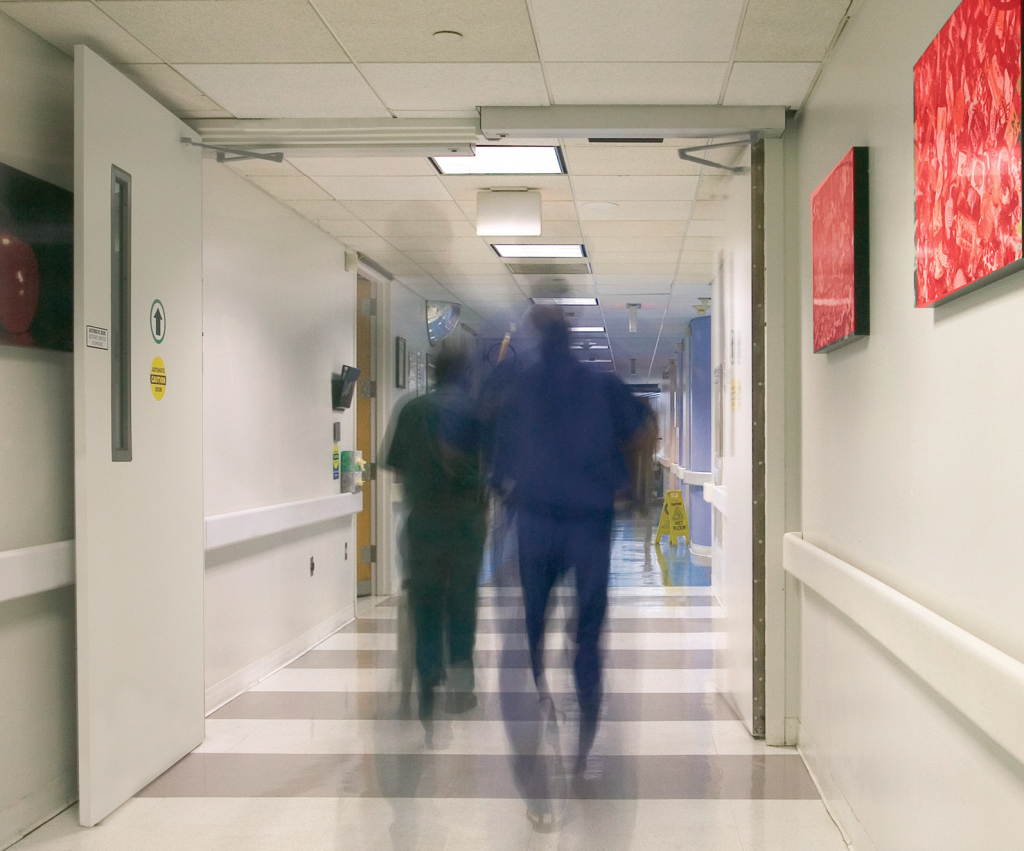Hospital fire door inspections are not specifically called out in the NFPA 101 Life Safety Code 2012 Edition, the Centers for Medicare & Medicaid Services which is a Department of Health and Human Services came out with a memorandum on July 28th, 2017 with a subject of: Fire and Smoke Door Annual Testing Requirements in Health Care Occupancies.
This memo summary is as follows:
- Firstly, In health care occupancies, fire door assemblies requirement is to have an annual inspection in accordance with the 2010 National Fire Protection Association (NFPA) 80.
- Secondly, in health care occupancies, non-rated doors assemblies including corridor doors to patient care rooms and smoke barrier doors are not subject to the annual inspection and testing requirements of either NFPA 80 or NFPA 105.
- Thirdly, non-rated doors should have a routine inspection as part of the facility maintenance program.
- Fourthly, full compliance with the annual fire door assembly inspection and testing in accordance with 2010 NFPA 80 is a requirement by January 1, 2018.
- Finally, Life Safety Code deficiencies found during the annual inspection and testing of fire doors should be cite under K211 – Means of Egress – General.
Fire Door Inspection Testing – Background

The Centers for Medicare & Medicaid Services (CMS) adopted the 2012 edition of the NFPA LSC, which includes requirements for the maintenance, inspection, and testing of fire doors and smoke doors in certain certified health care facilities.
The 2012 Life Safety Code added new provisions under Section 7.2.1.15 – Inspection of Door Openings for the annual inspection and testing of certain fire doors and smoke doors assemblies in accordance with the 2010 editions of NFPA 80 – Standard for Fire Doors and Other Opening Protectives, and NFPA 105 – Standard for Smoke Door Assemblies and Other Opening Protectives.
The new Life Safety Code provisions under sections 7.2.1.15.1 and 7.2.1.15.2 require certain fire door and smoke door assemblies to be inspected and tested annually in accordance with the NFPA 80 and NFPA 105. However, section 7.2.1.15.1 states that these requirements only apply where required by Chapters 11 through 43. Therefore, as the LSC health care occupancy chapters (i.e., Chapters 18, 19, 20, 21) do not directly reference section 7.2.1.15, these new annual inspection and testing requirement do not apply to health care occupancies.
Certainly, we should note that the Life Safety Code chapters for assembly, education, day care, and residential board and care occupancies do directly reference 7.2.1.15. Therefore, if a health care occupancy contains a separated multiple occupancy, the 7.2.1.15 requirement for annual fire and smoke door inspection and testing would be applicable to these other occupancies.
Annual Inspection & Testing Requirements in Health Care Occupancies
Although the requirements under Life Safety Code section 7.2.1.15 are not applicable to health care occupancies. Annual inspection and testing of fire doors assemblies in accordance with NFPA 80 are still a requirement in health care occupancies. Life Safety Code section 8.3.3.1, which is applicable to all occupancy chapters. In addition, with the exception of new doors in horizontal exits. The annual inspection and testing of smoke door assemblies in accordance with NFPA 105 is not a requirement per Life Safety Code section 8.5.4.2 as doors in health care occupancies do not have to be smoke-leakage-rated.
Centers for Medicare & Medicaid Services Conclusion
In health care occupancies, annual inspection in accordance with the 2010 NFPA 80 is required for all fire door assemblies. Non-rated doors, including corridor doors to patient care rooms and smoke barrier doors, are not subject to the annual inspection and testing requirements of either NFPA 80 or NFPA 105. Non-rated doors should be routinely inspected as part of the facility maintenance program. As all required life safety features and systems must be maintained in proper working order. Life Safety Code deficiencies during the annual inspection of fire doors should be cite under K211 – Means of Egress – General.
Compliance Time Extension CMS regulatory adoption of the 2012 LSC regulation was July 5, 2016. Therefore, the required annual door inspections and testing would be expected by July 6, 2017. However, considering the level of reported misunderstanding of this requirement, CMS has extended the compliance date for this requirement by six months. Compliance with the annual fire door assembly inspection in accordance with 2010 NFPA 80 will happen by January 1, 2018.
NFPA 80 defines qualified person

We have found through our own hospital fire door inspections that the definition of a qualified person is being stretched. For instance, NFPA 80 definition of a qualified person:
3.3.95 Qualified Person. A person who, by possession of a recognized degree, certificate, professional standing, or skill, and who by knowledge, training, and experience, has demonstrated the ability to deal with the subject matter, the work, or the project.
We understand costs are a major factor and scrutiny of budgets to the penny happen daily. We are here to help be your partner when it comes to fire and life safety. Having a third party testing body helps mitigate some of your risk having these services done with outside vendors.
We work closely with all AHJ’s in the region
To clarify, the hardest part is not doing the inspection. In other words, the hardest part of a Fire Door Inspection is completing a report. We find that most authority having jurisdiction (AHJ) approve of our reporting. We work closely with many reporting agencies including state fire marshals, local fire districts and The Joint Commission. This offers piece of mind knowing that our reporting stands up to the most strict inspectors within those agencies.
Contact us today. We can set up a time to come talk about your pain points and how we can address them. In conclusion, we can show you the reporting vehicle we use and how we track noncompliant doors and door systems. When we identify noncompliant doors we can also preform the services to bring them back into standard. Above all, we want to be your strategic partner for your hospital fire door inspections. We will take away the headache when you are thinking about your doors.

